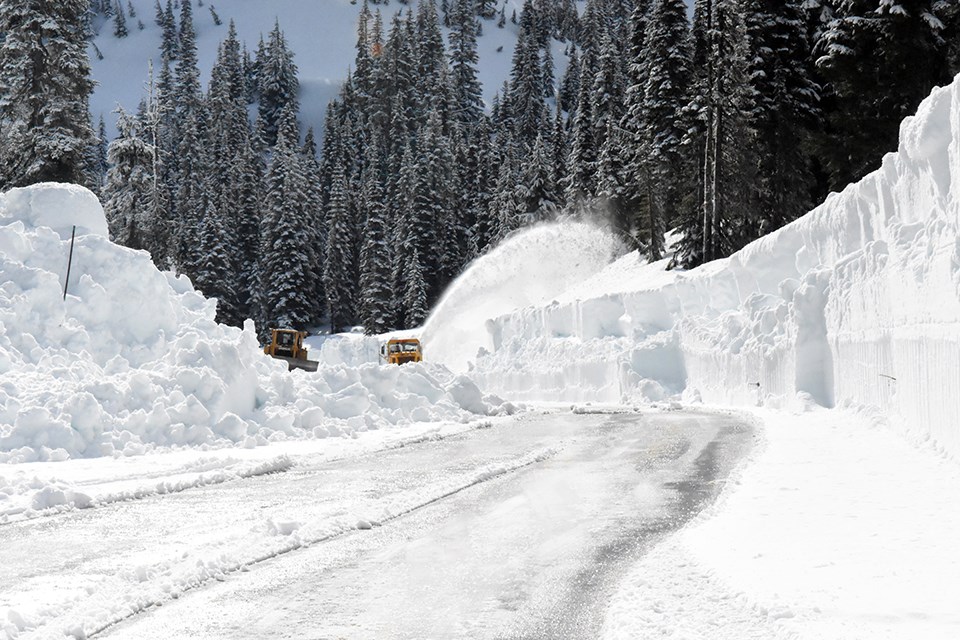1 SNOW has the same origin as rain: it comes from vapor in the atmosphere, especially from vapor rising from the surface of the sea. When a sudden cooling off takes place in clouds at a high elevation, the condensation of vapor is immediately followed by freezing, which turns water into ice.
2 I have already told you that cirrus clouds, which are the highest of all clouds and hence more exposed to cold than the others, are composed of extremely fine needles of ice. Lower clouds, too, if subjected to a sufficient degree of cold, undergo the same transformation. Then there follows a symmetrical grouping of adjacent needles in delicate six-pointed stars which, in greater or less numbers and heaped together at random, make a snowflake. Soon afterward, when it has grown too heavy to float in the air, the flake falls to the ground.
3 Examine attentively one that has just fallen on the dark background of your sleeve or cap. You will see a mass of beautiful little starry crystals so graceful in form, so delicate in structure, that the most skillful fingers could never hope to make anything like them. These exquisite formations, which put to shame our poor human artistry, have nevertheless sprung from the haphazard mingling of cloud-masses.
4 Such then is the nature of snow, the schoolboy’s favorite plaything. From a somber and silent sky, it falls softly, almost perpendicularly. The eye follows it in its fall. Above, in the gray depths, it looks like the confused whirling of a swarm of white insects; below it resembles a shower of down, each flake turning round and round and reaching the ground only after considerable hesitation. If the snowfall continues thus for a little while, everything will be hidden under a sheet of dazzling whiteness.
5 Now is the time for dusting the back of a schoolmate with a well-directed snowball, which will bring a prompt reply. Now is the time for rolling up an immense snowball which, turning over and over and creaking as it grows, at last becomes too large to move even under our united efforts. On top of this ball, a similar one will be hoisted, then another still smaller on that, and the whole will be shaped into a grotesque giant having for mustache two large turkey feathers and for arms an old broomstick. But look out for the hands in modeling this masterpiece! More than one young sculptor will hasten to thrust them, aching with cold, into his pockets. But, though inactive himself, he will none the less give the others plenty of advice on how to finish off the colossus.
6 Oh, how glorious is a holiday when there is snow on the ground! If I were to let myself go, how eloquent I could be on the subject! But, after all, what could I say that would be new to you? You know better than I all about the games appropriate to the occasion. You belong to the present, I to the past; you make the snowman now and here; I only tell about it from memory. We shall do better to go on with our modest studies, in which I can be of some help to you.
7 From snow to hail is a short step, both being nothing but atmospheric vapor turned to ice by cold. But while snow is in delicate flakes, hail takes the form of hard pellets of ice called hailstones. These vary greatly in size, from that of a tiny pin-head to that of a pea, a plum, a pigeon’s egg, and larger.
8 Hail often does much harm. The icy pellets, hard as stone, in falling from the clouds gain speed enough to make them break window-panes, bruise the unfortunate person not undercover, and cut to pieces in a few minutes harvests, vineyards, and fruit-crops. It is nearly always in warm weather that hail falls, and as necessary conditions, there must be a violent storm with flashes of lightning and peals of thunder.
9 If on the one hand a hail-storm is to be regarded as a disaster, on the other a fall of snow is often to be welcomed as a blessing. Snow slowly saturates the earth with moisture that is of more lasting benefit than a rainfall. It also covers the fields with a mantle that affords protection from severe frost, so that the young shoots from seeds recently sown remain green and vigorous instead of being exposed to the deadly sting of the north wind.
10 Snow plays still another part, and a very important one, a part having to do with the very existence of our streams. On account of the cold in high regions, it snows more often in the mountains than in the plains. In our latitude peaks three thousand meters high, or more, are unvisited by rain. Every cloud borne to them by the wind deposits, instead of a shower of rain, a mantle of snow, and that in all seasons of the year, summer as well as winter.
11 Driven by the wind or sliding down the steep slopes, this snow from the mountain- tops, renewed almost daily, collects in the neighboring valleys and piles up there in drifts hundreds of meters deep, which finally turn to ice as hard and clear as that of the pond where we go skating. In this way, there are formed and maintained those masses of moving ice known as glaciers, immense reservoirs of frozen water which abound in all the larger mountain systems.
12 In its upper reaches, where the mountain peaks pierce the sky, the glacier is continually receiving fresh snow that comes sliding down the neighboring slopes, while in its lower course, farther down the valley, where the warmth is sufficient, the ice melts and gives rise to a stream which is soon added to by others from neighboring glaciers. In this way, the largest rivers are started on their courses.





